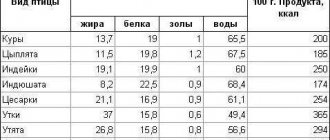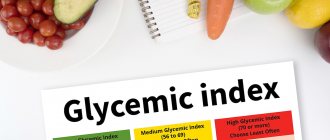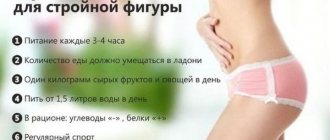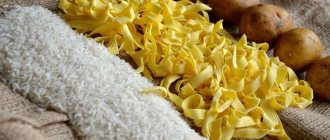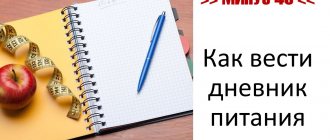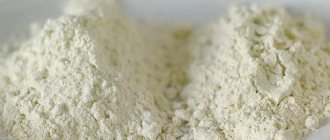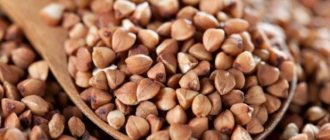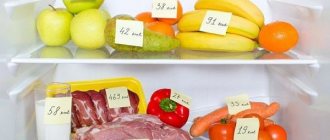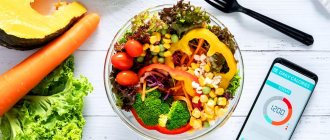Counting calories is the first step in creating a diet for weight loss or muscle gain. However, there is no need to calculate the number of calories in your diet with an accuracy of one, using complex professional food composition tables.
In reality, the calorie content of cereals varies between 350-400 kilocalories per 100 g, and the calorie content of meat depends on the fat content in a particular piece - which is difficult to determine by eye. How to count calories for weight loss? Simple tables and product list.
How to stay slim
- You should always get up from the table with a slight feeling of unsatiation.
- You should weigh yourself at least once a week and compare the result with the previous one.
- If you see that you have begun to gain weight, you need to limit either the total amount of food, or its calorie content, or start moving more, or both and three at the same time.
- Even if a person loves to eat, good physical activity will prevent extra pounds from forming. If your profession does not involve physical labor, you need to walk 6-8 km daily.
- The main food load (80-85% of food) should occur in the first half of the day.
Calorie content of weight loss products by group
When creating a menu, it is very convenient to use lists of foods allowed for weight loss, indicating calorie content per 100 grams.
Vegetables and greens
- boiled potatoes = 80 kilocalories;
- white cabbage = 31 kilocalories;
- colored = 30 kilocalories;
- olives = 110 kilocalories;
- zucchini = 30 kilocalories;
- eggplant = 20 kilocalories;
- beans = 60 kilocalories;
- onions = 40 kilocalories;
- green = 20 kilocalories;
- carrots = 29 kilocalories;
- cucumbers = 15 kilocalories;
- tomato = 20 kilocalories;
- beets = 22 kilocalories;
- green peas = 75 kilocalories;
- pumpkin = 22 kilocalories.
Pumpkin is considered a nourishing product that can be added to salads and made into sweets for tea.
Fruits and berries
Just like vegetables and fruits, berries promote weight loss. It is worth considering that the sweetest fruits will not contribute to weight loss.
- banana = 85 kilocalories;
- pineapple = 50 kilocalories;
- grapes = 75 kilocalories;
- apple = 45 kilocalories;
- lemon = 30 kilocalories;
- peach = 40 kilocalories;
- persimmon = 60 kilocalories;
- white currant = 35 kilocalories;
- black currant = 37 kilocalories;
- red currant = 40 kilocalories;
- pear = 40 kilocalories;
- grapefruit = 35 kilocalories;
- pomegranate = 50 kilocalories;
- cranberries = 25 kilocalories;
- strawberries = 30 kilocalories.
Many citrus fruits, especially grapefruit, are considered the most useful fruit in the fight against excess weight.
Cereals, beans and grains
These products can be classified as slow carbohydrates. They provide a feeling of fullness for a long time.
- buckwheat = 95-100 kilocalories;
- rice = 115 kilocalories;
- oatmeal = 92 kilocalories;
- rice = 80 kilocalories;
- buckwheat = 135 kilocalories;
- semolina = 75 kilocalories;
- beans = 35 kilocalories;
- beans = 58 kilocalories;
Not all of these foods are considered non-caloric, but they should still be present in the diet.
Fish and seafood
Fish is a source of omega-3, the acid that the body needs to function. Add fish to your diet so that your body does not experience stress from the lack of necessary elements.
- mussels = 50 kilocalories;
- pollock = 65 kilocalories;
- burbot = 85 kilocalories;
- crayfish = 95 kilocalories;
- trout = 100 kilocalories;
- pike = 80 kilocalories;
- shrimp = 80 kilocalories.
Meat, poultry and eggs
It is this type of product that contains large quantities of animal protein.
- beef = 190 kilocalories;
- rabbit = 100 kilocalories;
- lean pork = 315 kilocalories;
- veal = 90 kilocalories;
- turkey = 190 kilocalories;
- chicken eggs = 155 kilocalories;
- quail = 165 kilocalories.
Animal protein, of course, is necessary for the body, but each person can decide for himself whether to include it in the diet or not, and you can also seek advice from a specialist who will help you create a balanced, low-calorie diet.
Low calorie baked goods
Psychologically, it is very difficult for many people to give up baking, so knowing its calorie content is very important.
- white bread = 250 kilocalories;
- gray bread = 200 kilocalories;
- lavash = 240 kilocalories.
You can also use diet bread.
Nuts and oils
This category of products is high in calories, but the body also needs them, as they contain valuable fats.
- peanuts = 550 kilocalories;
- cashews = 650 kilocalories;
- hazelnuts = 700 kilocalories;
- walnut = 660 kilocalories;
- pistachios = 555 kilocalories;
- olive oil = 780 kilocalories;
- almond = 815 kilocalories;
- apricot = 900 kilocalories;
- flax = 900 kilocalories;
- sunflower = 900 kilocalories;
- butter = 750 kilocalories.
It is best to add these ingredients to salads.
Low calorie drinks
There are many low-calorie drinks; below we will consider several options with a minimum calorie content per 100 milliliters.
- cucumber juice = 15 kilocalories;
- beet = 60 kilocalories;
- pumpkin = 35 kilocalories;
- water with lemon = 30 kilocalories;
- watermelon-mint = 25 kilocalories;
- mineral water without gas = 0 kilocalories;
- ginger tea = 15 kilocalories;
- green = 0 kilocalories;
- white = 34 kilocalories;
- black coffee without sugar = 2 kilocalories.
During the holidays, many people are wondering which alcoholic drinks are considered low-calorie? The following types of drinks can be distinguished:
- semi-sweet champagne contains 120 kilocalories per 100 milliliters;
- semi-sweet wine = 80-100 kilocalories;
- dry champagne = 80-85 kilocalories;
- red and white dry wines contain the least calories: about 65-70 kilocalories per 100 milliliters.
Fruits and berries
Don't forget about berries and fruits. They must be present in the diet. Nutritionists believe that instead of cakes and pastries, it is better to eat fruits for dessert. Some sweet fruits are high in calories. This means you should stop using them if you want to lose weight.
| Product | Water | Squirrels | Fats | Carbohydrates | kcal |
| Apricots | 86,0 | 0,9 | — | 10,5 | 46 |
| Quince | 87,5 | 0,6 | — | 8,9 | 38 |
| Cherry plum | 89,0 | 0,2 | — | 7,4 | 34 |
| A pineapple | 86,0 | 0,4 | — | 11,8 | 48 |
| Bananas | 74,0 | 1,5 | — | 22,4 | 91 |
| Cherry | 85,5 | 0,8 | — | 11,3 | 49 |
| Pomegranate | 85,0 | 0,9 | — | 11,8 | 52 |
| Pear | 87,5 | 0,4 | — | 10,7 | 42 |
| Figs | 83,0 | 0,7 | — | 13,9 | 56 |
| Dogwood | 85,0 | 1,0 | — | 9,7 | 45 |
| Peaches | 86,5 | 0,9 | — | 10,4 | 44 |
| Rowan garden | 81,0 | 1,4 | — | 12,5 | 58 |
| Rowan chokeberry | 80,5 | 1,5 | — | 12,0 | 54 |
| Garden plum | 87,0 | 0,8 | — | 9,9 | 43 |
| Dates | 20 | 2,5 | — | 72,1 | 281 |
| Persimmon | 81,5 | 0,5 | — | 15,9 | 62 |
| Cherries | 85,0 | 1,1 | — | 12,3 | 52 |
| Mulberry | 82,7 | 0,7 | — | 12,7 | 53 |
| Apples | 86,5 | 0,4 | — | 11,3 | 46 |
| Orange | 87,5 | 0,9 | — | 8,4 | 38 |
| Grapefruit | 89,0 | 0,9 | — | 7,3 | 35 |
| Lemon | 87,7 | 0,9 | — | 3,6 | 31 |
| Mandarin | 88,5 | 0,8 | — | 8,6 | 38 |
| Cowberry | 87,0 | 0,7 | — | 8,6 | 40 |
| Grape | 80,2 | 0,4 | — | 17,5 | 69 |
| Blueberry | 88,2 | 1,0 | — | 7,7 | 37 |
| Blackberry | 88,0 | 2,0 | — | 5,3 | 33 |
| Strawberries | 84,5 | 1,8 | — | 8,1 | 41 |
| Cranberry | 89,5 | 0,5 | — | 4,8 | 28 |
| Gooseberry | 85,0 | 0,7 | — | 9,9 | 44 |
| Raspberries | 87,0 | 0,8 | — | 9,0 | 41 |
| Cloudberry | 83,3 | 0,8 | — | 6,8 | 31 |
| Sea buckthorn | 75,0 | 0,9 | — | 5,5 | 30 |
| White currant | 86,0 | 0,3 | — | 8,7 | 39 |
| Red currants | 85,4 | 0,6 | — | 8,0 | 38 |
| Black currant | 85,0 | 1,0 | — | 8,0 | 40 |
| Blueberry | 86,5 | 1,1 | — | 8,6 | 40 |
| Fresh rosehip | 66,0 | 1,6 | — | 24,0 | 101 |
| Dried rose hips | 14,0 | 4,0 | — | 60 | 253 |
Energy value of dietary nutrients
Food packaging typically states the energy, protein, carbohydrate and fat content. However, in some cases you have to count the calories in a product yourself.
The energy value of individual nutrients is shown in the table:
| Nutrient | Energy content, kcal/g |
| Squirrels | 4,1 |
| Fats | 9,3 |
| Carbohydrates | 4,1 |
| Ethanol | 7,1 |
| Alimentary fiber | 1,9 |
Alcoholic drinks are highly nutritious. So, a glass of beer adds 215 kcal to the energy balance, and a bottle of vodka – 1150 kcal.
What foods should you not eat when losing weight?
The list of prohibited products is several times longer than the permitted ones. They have become such a strong part of our lives that it is not always possible to give them up. You shouldn’t immediately exclude all of the following; it’s enough to start by just minimizing their consumption.
- Sweets. Simple carbohydrates do not have any positive effect on the body; they will only add extra pounds and centimeters. Try to remove baked goods, confectionery, and sweets from the menu. You can replace them with weight loss bars, special desserts, diet sweets and dark chocolate.
- Baking is quite high in calories, especially if it contains a lot of yeast. They disrupt microflora, slowing down metabolism.
- Store-bought sauces, mayonnaise.
- Soda, packaged juices.
- Fatty dairy and fermented milk products.
- Meat and fish with a high fat content.
- Rice, pasta. Instead of the usual white variety of rice, preference should be given to brown; for pasta, it is better to buy durum wheat.
- Potatoes contain a large amount of starch, which is harmful to your figure. However, sometimes you can treat yourself to a baked potato.
- Alcohol is not only harmful to health, but also helps you gain excess weight. Therefore, it is better to remove it from everyday life. Red wine is considered the most low-calorie alcohol.
- Fast food, semi-finished products.
In addition to the fact that the consumption of all these products should be minimized, it is also worth paying attention to the naturalness of the permitted products. The fewer preservatives, the better for the body.
How and why calorie needs are calculated
Energy requirements depend on the following factors:
- age;
- floor;
- height and weight;
- Nature of activity.
The average daily requirement for women is 2000 kcal, for men – 2500 kcal.
The required number of calories for a particular person is calculated according to the following algorithm:
- Determination of the basic level of exchange.
- Correction based on gender.
- Activity coefficient.
- Recalculation for weight loss or weight gain.
Determining the basic level of exchange
The calculation is carried out using regression equations:
E=M*10+ H *6.25-4.92* T
Where E is energy requirement, kcal; M—weight, kg; H—height in cm; T—age years. For a person aged 30 years, height 170 cm, weight 70 kg per day, 70 * 10 + 170 * 6.25-4.92 * 30 = 1615 kcal are required.
Gender adjustment
For a man we add 5 to the result, for a woman we subtract 161. We get the following numbers: 1620 and 1454 kcal.
Be sure to read: Diet with restriction of easily digestible carbohydrates for weight loss
Activity factor
Depending on your lifestyle, the result obtained is multiplied by a coefficient. For people engaged in sedentary work, it is equal to 1.2. For actors or regularly training athletes, the basic indicator is multiplied by 1.55. Professional athletes should use a coefficient of 1.9.
So, for a female accountant, the daily calorie intake is 1454 * 1.2 = 1745 kcal. The actress will need 1454*1.55=2254 kcal during rehearsals; weightlifter - 3078 kcal.
Correction for weight loss or weight gain
The calculations described are intended to maintain the weight from which calorie needs were calculated. If a person wants to lose weight, he should create a diet that is 20% deficient.
So, an actress who decided to lose extra pounds will need a daily intake of 2254 * 0.8 = 1803 kcal. A weightlifter will need 3078*1.2=3694 kcal to gain muscle mass. If you need to lose weight, you will have to be content with 3078*0.8=2462 kcal.
Calorie diet
Not all people, even purely psychologically, are able to withstand a strict diet for weight loss or prepare specially separate food, and they may not have enough time or opportunity to visit the gym. But the secret to success in losing excess weight remains the same - calorie consumption should be greater than their consumption.
How to choose calorie-rich diet recipes
Many people believe that diet food is monotonous and not tasty. We can safely say that this is stereotypical thinking, based on the experience of those who either only tried to cook chicken breast and eat cucumbers, or did not try to cook according to recipes at all. In order for recipes for ready-made dishes to be low in calories, the following rules must be followed:
- choose lean varieties of meat, poultry and fish;
- give preference to low-fat dairy products;
- fry and stew food in a non-stick frying pan without vegetable or animal fat or with minimal addition;
- check the full calorie tables for foods.
